
9
MODEL NO. 665 MAINTENANCE CHECK LIST
Porter recommends a maintenance inspection take place at least once a year by a Porter Certified
Inspector, using the attached check list. Porter recommends the same check list be used as a
guide for additional inspections by facility personnel or operators every 6 months. Any abnormal
movement or sound during operation is cause for an immediate and thorough inspection. The annual
inspection by a Porter Certified Inspector is required to maintain the extended limited warranty.
1. GENERAL
Before inspecting, be certain to follow all OSHA guidelines concerning the use of scaffolds and
lifts. The proximity of the scaffold or lift to the curtain must be of adequate distance to provide
working clearance, so as not to have the curtain contact the lift during operational checks.
Make certain the Porter key switch, Powr-Touch® pad, or control system are not substituted and
is located within full view (but not beneath) the divider curtain. Check the walls in close proximity
to the curtain for any type of protrusion that may interfere with the raising or lowering of the unit
(i.e., new scoreboard, chinning bars, etc.).
2. ELECTRIC WINCH
Although virtually maintenance-free, the electric winch should also be periodically inspected for
proper operation of the limit switch assembly and key switch. Refer to the key switch/limit switch
instructions that came with the winch for adjustment procedure.
Inspect the three (3) 1/2” “U”-bolt connections of the frame weldment support to the support tube,
ensuring all hardware is tight. The hardware at the building connection is also to be inspected for
tightness.
The variable ratio drums are to be visually inspected, making certain the incoming cables are
aligned with the take-up drums. Cable alignment is critical, and can be easily adjusted by moving
the idler pulleys at each cable take-up line across the curtain.
3. PRIMARY AND IDLER PULLEYS
Inspect all primary steel take-up sheaves (pulleys) for any sign of wear. Replace the sheaves
should wear be evident. Determine cause of any excessive wear (typically a cable alignment
issue), and adjust as necessary. Do the same for the nylon idler pulleys. Note any idler pulley
which receives a cable change in direction is to be steel, not nylon sheave.
4. TOP CURTAIN CONNECTIONS
Inspect all chain and “S” hook connections, making certain the hardware is all “closed.”

10
5. HOISTING CABLES
Inspect all 1/8” galvanized hoisting cables for kinking or fraying, replacing as necessary.
6. TOP AND BOTTOM CURTAIN POCKET CONCEALED PIPES
Inspect both the top and bottom pockets, ensuring the concealed pipe is not separating. At the
bottom hem, the pipe is to be secured to the fabric at each cable line with a 5/16” bolt through the
curtain, the bottom pipe, and secured with a cap nut (see Figure O).
7. SUPERSTRUCTURE
Visually inspect all super structure and connections for any sign of abnormal deflection or
structural cracks. Check all hardware to confirm it is present and secure.
8. FABRIC
Inspect the curtain for any tears or holes in the fabric. Additional fabric is supplied with the curtain,
to be used for patching. Industrial vinyl cement will easily bond the vinyl patch to the curtain.
Also, check the fabric for signs of tearing or loosening at the seams. Check grommets at all
pullup lines. The fabric may be cleaned with a mild solution of soap cleaner and water, or Power
Foam sold by Rigmar Industries of Elk Grove Village, Illinois (1-800-323-0779).

11
665 DIVIDER CURTAIN INSPECTION REPORT
The following page should be copied and returned to Porter Athletic by a Porter Certified Inspector after
each inspection.
Porter Order Number _________________________
Project Name _________________________
Name of Selling Dealer _________________________
Date of Scheduled Shipment _________________________
Date of Substantial Completion _________________________
(Information should be found on the first page of Installation manual)
Inspecting Company Name ___________________________________________
Porter Certified Inspector Name ____________________________________________
Inspection Date ____________________________________________
Summary of Inspected Equipment, Include any replaced, repaired, damaged, or worn
parts.___________________________________________________________________
_______________________________________________________________________
_______________________________________________________________________
_______________________________________________________________________
_______________________________________________________________________
_______________________________________________________________________
_______________________________________________________________________
_______________________________________________________________________
_______________________________________________________________________
_______________________________________________________________________
_______________________________________________________________________
_______________________________________________________________________
_______________________________________________________________________
Please attach the checklist of each equipment inspected

12
665 CURTAIN INSPECTION CHECKLIST
Please refer to previous pages for details on inspections.
This checklist is to assist you in your inspection program.
As you are making the inspection, enter “S” for satisfactory, or “R” for repair and replace.
INSPECT ALL ITEMS FOR EACH CURTAIN
ELECTRIC WINCH
#1 #2 #3 #4 #5 #6 #7 #8 #9 #10 #11 #12
PRIMARY AND IDLER PULLEYS
#1 #2 #3 #4 #5 #6 #7 #8 #9 #10 #11 #12
TOP CURTAIN CONNECTIONS
#1 #2 #3 #4 #5 #6 #7 #8 #9 #10 #11 #12
HOISTING CABLES
#1 #2 #3 #4 #5 #6 #7 #8 #9 #10 #11 #12
TOP AND BOTTOM PIPES
#1 #2 #3 #4 #5 #6 #7 #8 #9 #10 #11 #12
SUPERSTRUCTURE
#1 #2 #3 #4 #5 #6 #7 #8 #9 #10 #11 #12
FABRIC
#1 #2 #3 #4 #5 #6 #7 #8 #9 #10 #11 #12
-
 1
1
-
 2
2
-
 3
3
-
 4
4
Porter SLOPE-FOLD NET CURTAIN Operating instructions
- Type
- Operating instructions
- This manual is also suitable for
Ask a question and I''ll find the answer in the document
Finding information in a document is now easier with AI
Related papers
-
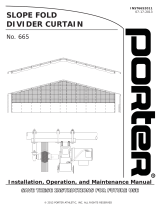 Porter SLOPE-FOLD DIVIDER CURTAIN Operating instructions
Porter SLOPE-FOLD DIVIDER CURTAIN Operating instructions
-
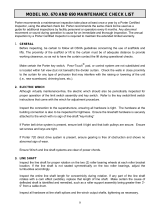 Porter PERIMETER FOLD-UP NET CURTAIN Operating instructions
Porter PERIMETER FOLD-UP NET CURTAIN Operating instructions
-
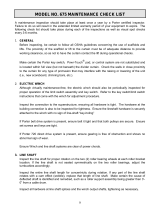 Porter ROLL-UP DIVIDER CURTAIN Operating instructions
Porter ROLL-UP DIVIDER CURTAIN Operating instructions
-
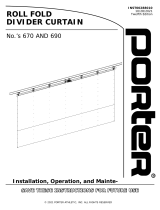 Porter FOLD-UP DIVIDER CURTAIN Operating instructions
Porter FOLD-UP DIVIDER CURTAIN Operating instructions
-
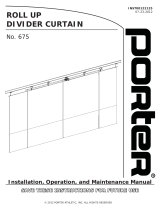 Porter ROLL-UP DIVIDER CURTAIN Operating instructions
Porter ROLL-UP DIVIDER CURTAIN Operating instructions
-
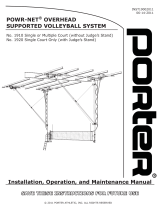 Porter POWR-NET TRIPLE COURT OVERHEAD SUPPORTED FOLD-UP VOLLEYBALL SYSTEM Operating instructions
Porter POWR-NET TRIPLE COURT OVERHEAD SUPPORTED FOLD-UP VOLLEYBALL SYSTEM Operating instructions
-
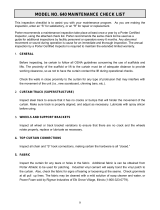 Porter WALK-DRAW DIVIDER CURTAIN Operating instructions
Porter WALK-DRAW DIVIDER CURTAIN Operating instructions
-
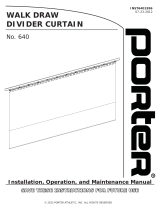 Porter WALK-DRAW DIVIDER CURTAIN Operating instructions
Porter WALK-DRAW DIVIDER CURTAIN Operating instructions
-
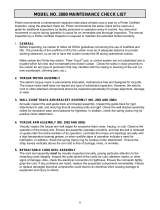 Porter BELT GUIDED CENTER-ROLL DIVIDER CURTAIN Operating instructions
Porter BELT GUIDED CENTER-ROLL DIVIDER CURTAIN Operating instructions
-
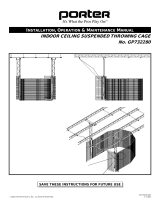 Porter CUSTOM CEILING SUSPENDED THROWING CAGE Operating instructions
Porter CUSTOM CEILING SUSPENDED THROWING CAGE Operating instructions
Other documents
-
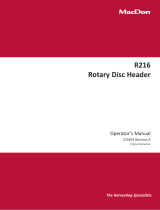 MacDon R216 User manual
MacDon R216 User manual
-
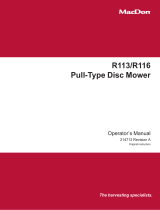 MacDon R113 & R116 User manual
MacDon R113 & R116 User manual
-
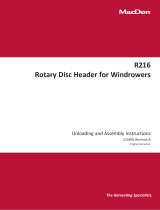 MacDon R216 Unloading & Assembly Instruction
MacDon R216 Unloading & Assembly Instruction
-
 Elliott Digger Derrick Operation & Maintenance Manual
Elliott Digger Derrick Operation & Maintenance Manual
-
 MacDon R113 & R116 User manual
MacDon R113 & R116 User manual
-
PURSUIT 2000 Kodiak-22 Owner's manual
-
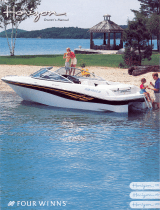 Four winns Horizon Owner's manual
Four winns Horizon Owner's manual
-
PURSUIT LS 235 Owner's manual
-
PURSUIT LS 235 Owner's manual
-
Sea Ray 2004 600 SUN SPORT Owner's manual



















